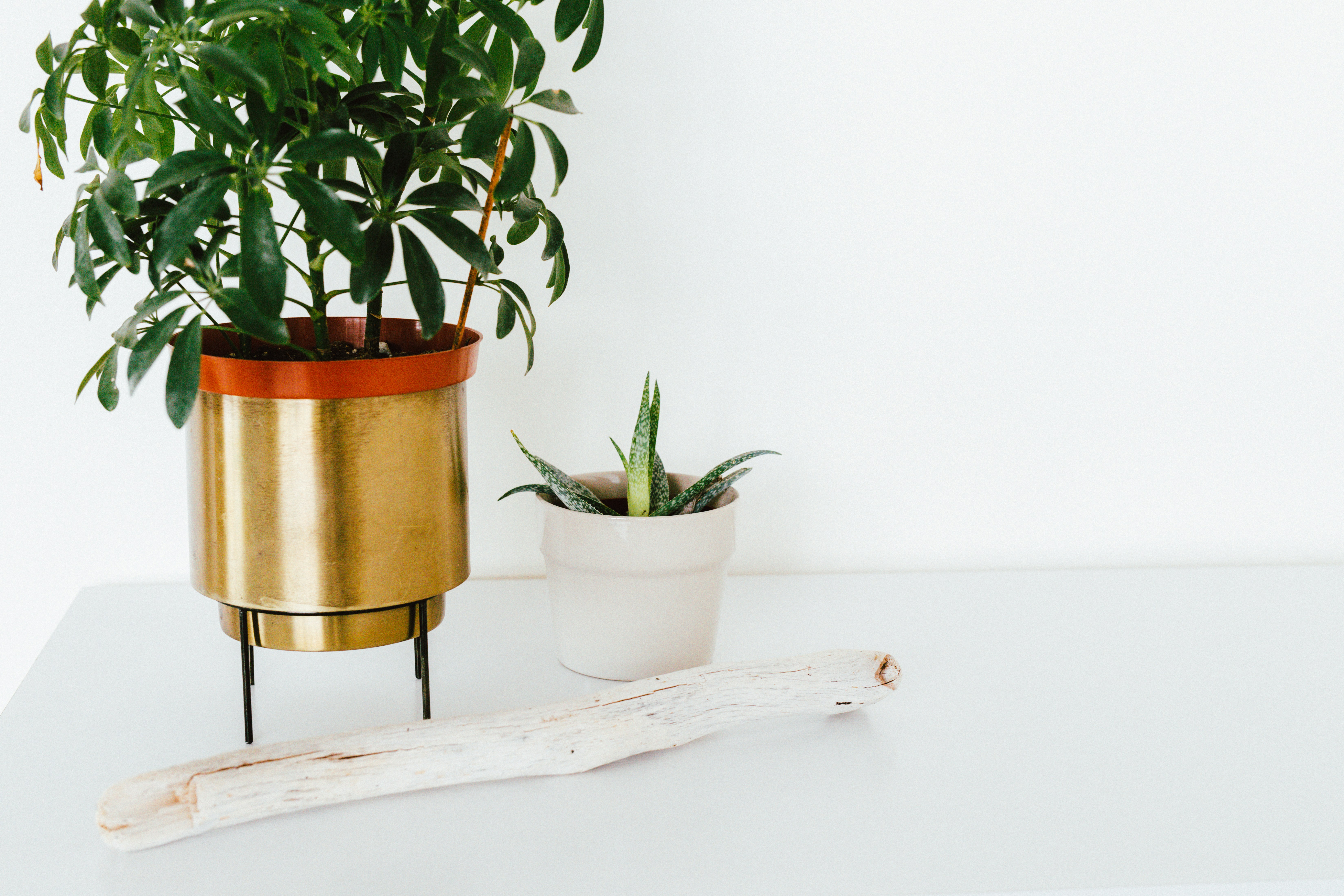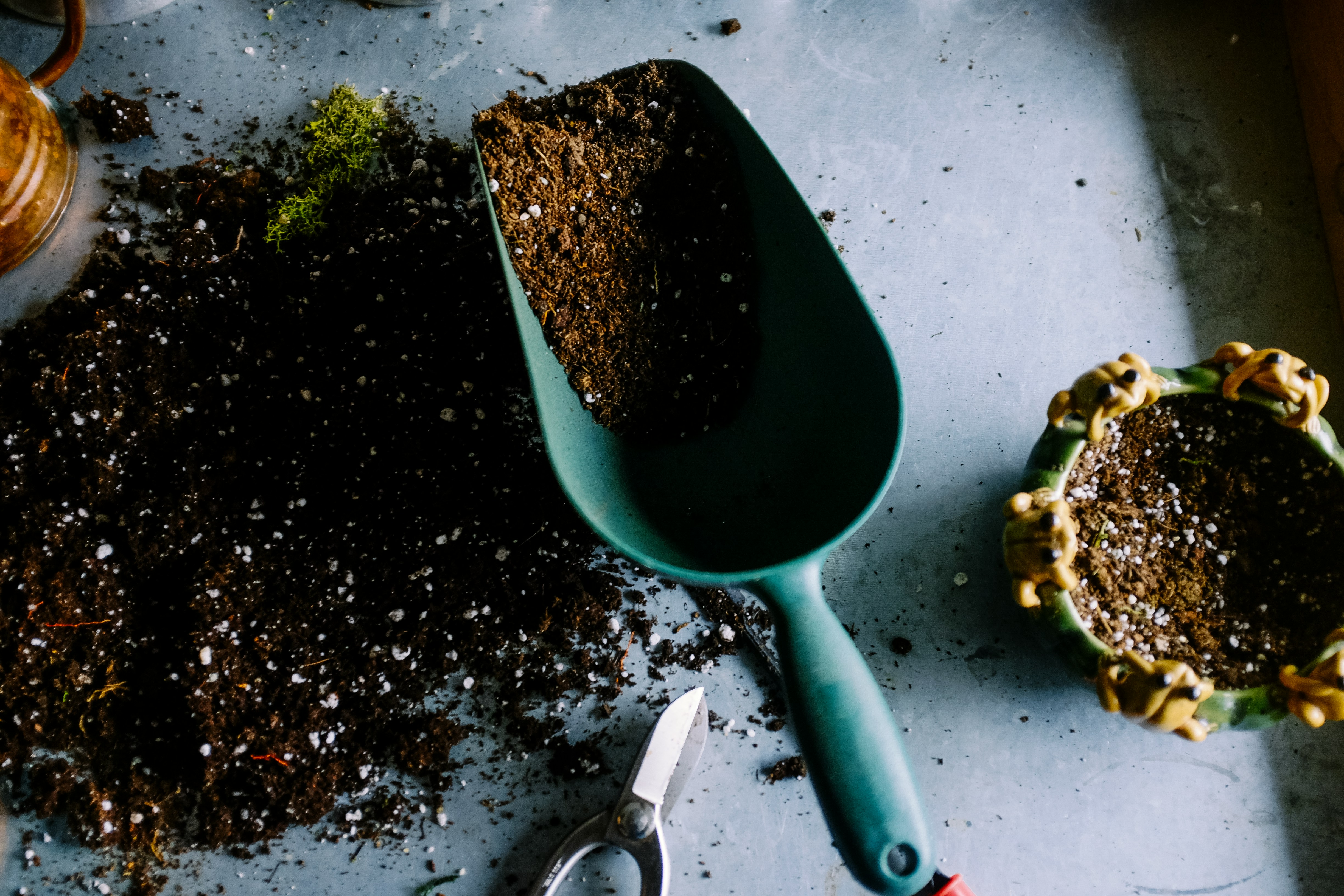Do you know what’s so great about plants? You can see the results of your hard work, dedication, and love reflected in how they grow. Houseplants have grown in popularity lately, especially during the pandemic. Everyone has been spending more time at home and has taken to gardening and caring for houseplants as hobbies. Greenery in the home has its benefits, too. Studies have shown that indoor plants can improve your mood, and decrease stress and anxiety. Plus they make a beautiful addition to any room!
There’s no such thing as a “green thumb” or a “black thumb” when it comes to caring for plants. It just takes a little patience, practice, and love. Here are five ways to manage your indoor and outdoor plants.

1. Watering
The most common issue that you can have with a plant is the watering. You would think underwatering would be the biggest problem, but it’s actually overwatering. Most people assume that all plants need to be watered the same way, however, this isn’t true. Every plant has different watering needs. A succulent or a cactus won’t need as much water as a tropical plant with lots of foliage. Plants would rather be a little dry than soaked. When a plant sits in water it can cause root rot and other issues.
There are plants that are easy to care for if you’re a beginner. The dracaena marginata is an excellent plant to start with. It likes to have dry soil between waterings, so it can tolerate a little neglect. It also prefers moderate to indirect light, as direct sunlight can burn the leaves.
As far as watering, a good general rule of thumb is to just stick your finger in the soil! If it’s moist up to an inch, then your plant is fine. If it’s dry, you should give it a drink.
There’s also the matter of the seasons. During the summer, outdoor plants and indoor plants need more watering than in the winter months. Typically indoor plants only need watering once or twice a month during the winter season. Outdoor plants are also used to humidity, and you can imitate this indoors by misting your plants or purchasing a humidifier to keep them happy.
2. Lighting
Just as important as water, all plants need light to grow and thrive. When planting something outside, it’s important to know where the sun shines in your garden and for how long. As with water, not all plants need the same amount of light. There are plants that need bright, indirect light, and there are some that thrive in low light. A popular houseplant that can handle darker areas would be something like a ZZ plant. While plants won’t die if they don’t get the right amount of lighting, they won’t produce new growth either.

3. Pruning
It seems so mean to cut off the leaves of a plant, but you’re really doing it a favor! When you notice the lower leaves start to brown or have brown tips, just snip them away. When you do this, it helps the plant redirect its energy into new growth, instead of trying to revitalize the dying bottom leaves. You can and should do this for all of your plants, and trees too.
Trees — from small trees to palm trees — need trimming and pruning at some point. It can be daunting to attempt this on your own, but there are always services in your area to help you out. Carry out a simple Google search of tree trimmers in your area such as, “Brisbane tree lopping services” and you’ll be provided with a list of companies to take care of the task for you. Companies like Affordable Tree Service offer tree pruning, stump grinding, palm cleaning and removal, emergency tree removal, and more. They never use harmful chemicals, and pride themselves on being affordable. You can get a free quote for whatever tree service you’re in need of.
4. Drainage
It’s very important that all plants you have in containers — outdoor or indoor — have the proper drainage. It may not be something you think about, especially when you find a cute new container! You can puncture holes in a pot yourself, depending on the material of the pot. If that’s not an option, you can keep your plant in a nursery pot and place the pot in the other container. Just be sure to empty out any excess water that may be sitting at the bottom.
5. Pests

You know outdoor plants can get pests, but it’s also a common problem for indoor plants. Spider mites and mealybugs just love to call your beautiful plant home! The best thing you can do is to identify the type of pest and treat it accordingly. You can take measures to prevent them, such as spraying neem oil on the top soil once a month. Unfortunately, you can’t predict what types of pests may or may not infect your plants, so be sure to inspect them regularly.
Indoor and outdoor plants are a fun and rewarding hobby! If you keep these important tips in mind, your garden will be thriving.

 Busy Moms: Hassle-Free Hair Care Tips that Work Like a Charm
Busy Moms: Hassle-Free Hair Care Tips that Work Like a Charm